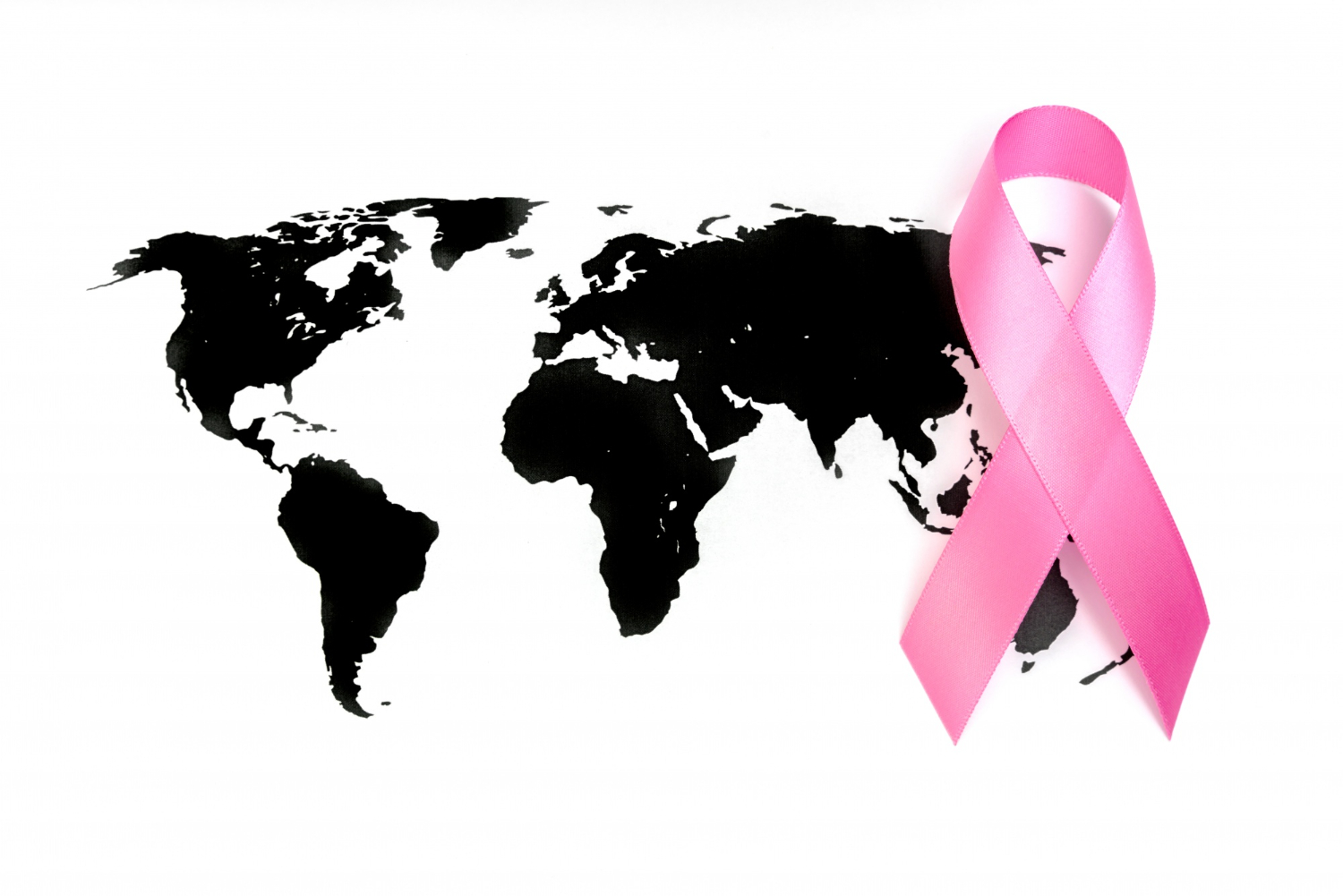On 19 October, we commemorate World Breast Cancer Day, a day that invites us to reflect on the importance of prevention, early diagnosis and comprehensive support for those affected by this disease. On this occasion, we address not only the preventive measures we can all take, but also the relevance of early detection and comprehensive treatment.
Prevention: How to Reduce the Risk
There is growing evidence that healthy lifestyle habits play a crucial role in the prevention of breast cancer. Genetic mutation in cells, which results in the loss of the natural mechanism of contact inhibition (i.e. when one cell stops growing on contact with another), is the starting point of cancer. Although there is a genetic predisposition in some cases, external factors are decisive. Here are the key actions to reduce the risk:
1. Maintain a Healthy Weight
Being overweight is closely linked to breast cancer risk, especially in women close to menopause. Oestrogens produced in fat tissue can contribute to tumour development. Maintaining an appropriate weight helps to reduce this risk, especially before, during and after the menopause.
2. Follow the Mediterranean Diet
This dietary pattern, rich in antioxidants, helps protect cells from damage that could lead to DNA mutations. Foods such as oily fish, olive oil and nuts contain healthy fats that reduce inflammation, while the fibre in legumes and whole grains helps remove excess oestrogen from the body.
3. Get Daily Physical Activity
An active lifestyle can reduce breast cancer rates by up to 14%. Exercise combats insulin resistance, helps maintain a healthy weight and reduces fat accumulation. In addition, during cancer treatments, physical activity can improve mood and reduce the risk of recurrence.
4. Controlled Sun Exposure
The sun is our main source of vitamin D, essential for the body’s defences to repair damage that could lead to tumours. Controlled sun exposure, depending on geographical location, can be beneficial. Consult a health professional about possible vitamin D supplementation if necessary.
5. Avoid Toxics
Alcohol and tobacco are two toxicants associated with increased risk of breast cancer. The ethanol in alcohol increases oestrogen levels, while tobacco and environmental pollution can also increase the risk. In addition, some heavy metals in processed foods may have similar effects.
6. Avoid Intense Light at Night
Exposure to intense light at night reduces the production of melatonin, a hormone that not only regulates sleep, but also protects against tumour development.
Early Diagnosis: Key to Survival
Early diagnosis is essential to improve cure rates and reduce mortality. Detecting breast cancer in its early stages allows for less invasive and more effective treatments.
Diagnostic Methods:
- Breast self-examination: Although not a replacement for medical examinations, it is vital for women to know the normal look and feel of their breasts.
- Mammography: Primary diagnostic tool. Recommended from the age of 45-50 and should be repeated every 1 to 2 years.
- Breast ultrasound: Useful in young women with dense breasts or when mammography detects abnormalities.
- Magnetic Resonance Imaging: Indicated for high-risk patients or those with genetic mutations.
- Biopsy: In suspicious lesions, performed to confirm if they are cancerous.
- Genetic testing: For women with a family history, these tests identify mutations that increase the risk of cancer.
Early diagnosis improves prognosis and reduces the need for invasive treatments such as mastectomy. It also contributes to a significant reduction in breast cancer mortality.
Treatment: Personalised Approach
The treatment of breast cancer should be comprehensive, combining different therapies personalised according to the type of cancer and the patient’s general condition.
1. Surgery
- Mastectomy: Total removal of the breast.
- Conservative surgery: Only the tumour and a margin of healthy tissue is removed.
- Sentinel node biopsy: Determines whether the cancer has spread to the lymph nodes.
2. Radiation therapy
Used to destroy cancer cells remaining after surgery or reduce the size of the tumour before surgery.
3. Chemotherapy
Used to destroy cancer cells, it may be given before or after surgery, depending on the case.
4. Hormone therapy
For hormone receptor positive cancers, this therapy reduces the risk of recurrence by blocking the action of oestrogen.
5. Targeted Therapy
Treats specific characteristics of cancer cells, such as trastuzumab for HER2-positive tumours.
6. Immunotherapy
In triple-negative breast cancers, immunotherapy has been shown to be effective in activating the immune system to attack cancer cells.
7. Supportive Therapies and Palliative Care
Pain management, psychological care and physical rehabilitation improve patients’ quality of life.
8. Follow-up and Surveillance
Regular follow-up after initial treatment is vital to monitor recurrence and manage side effects.
The Importance of a Holistic Approach
Comprehensive breast cancer treatment combines oncological therapies with holistic care that considers the physical, emotional and social well-being of each patient. Each treatment is personalised to maximise quality of life and ensure the best possible outcome.
Nutrition and exercise during breast cancer treatment
Maintaining a balanced diet and regular physical activity are fundamental pillars for breast cancer patients, both during and after treatment. Not only do they improve general well-being, but they also help to reduce the risk of recurrence. In addition, a proper diet enhances the effects of cancer treatments, reducing side effects and strengthening the immune system.
Why is nutrition so important?
Nutrition plays a key role during cancer treatment. Some of its main benefits include:
- Strengthens the body: Supports the body during treatments such as chemotherapy and radiotherapy, improving resistance and recovery.
- Improves tolerance to treatments: Helps the body recover faster and minimise side effects.
- Reduces inflammation: A proper diet helps fight inflammation, which prevents loss of muscle mass.
- Promotes emotional well-being: A balanced diet improves energy, mood and quality of life.
Recommended foods for breast cancer patients
During breast cancer treatment, it is essential to pay attention to the foods you eat. Here are some of the most recommended foods:
- Fresh fruits and vegetables: They are rich in antioxidants, vitamins and minerals, which helps reduce inflammation and fight free radicals.
- Quality protein: Eating foods such as fish, eggs and pulses is crucial for maintaining strength and muscle mass during treatment.
- Healthy fats: Olive oil, avocado and nuts are sources of healthy fats that help reduce inflammation.
Foods to avoid
There are certain foods that are best to limit or avoid during breast cancer treatment, as they can have a negative effect on health:
- Ultra-processed and trans fats: These foods increase inflammation and the risk of relapse.
- Refined sugars: Excessive consumption of sugar can weaken the immune system.
- Alcohol: Alcohol consumption should be very limited, as it negatively affects cancer treatments.
The role of exercise in breast cancer
Regular exercise is a powerful ally in the treatment of breast cancer. Some studies suggest that moderate physical activity can reduce fatigue and improve patients’ quality of life. It also helps to maintain a healthy weight and reduce inflammation, key factors in preventing cancer recurrence.
On this World Breast Cancer Day, let’s reflect on the importance of taking care of our health, adopting preventive habits and supporting those who are facing this tough disease.



